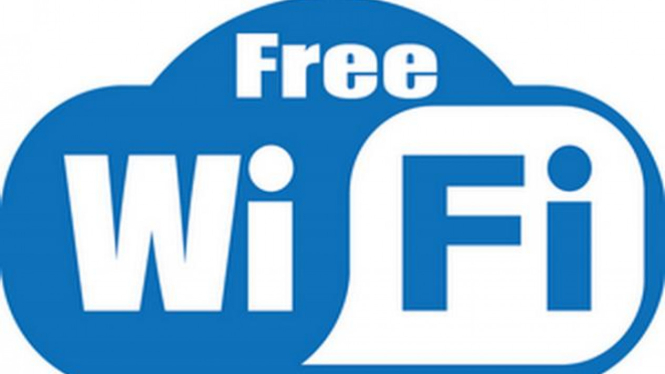VIVA Lifestyle – The fact behind the invention of Wifi, people are connecting to Wi-Fi in this era of connectivity to connect to social media, work from home, or study through distance learning.
Despite its popularity, not everyone knows much about this wireless technology. Wi-Fi is a wireless networking technology that allows people to connect to Internet through different devices such as computers, laptops, smart phones, wearables, printers, video cameras and other equipment.
It creates a network by connecting multiple devices at once and allowing them to exchange information. Once able to access the Internet using a wireless router, which allows compatible devices to connect to Wi-Fi.
WiFi perhaps is something the world could never live without. Some technology facts show that there are 3.8 billion Internet users and around 8 billion gadgets are connected to the Internet every day.
There is no denying that WiFi is and will continue to be ubiquitous in our lives. We can even personalize our own WiFi nowadays. However, the facts behind the invention of WiFi and how it works are equally important to know as well. Here are the facts behind the invention of WiFi that you need to know, launches techtimes.com:
–
WiFi Discovery: When and Who?
It can be said that the discovery of WiFi was a team effort by different people and by luck. The first group to get involved was Australian radio astronomer John O’Sullivan and a group of scientists.
Back in the 1900s, they wanted to prove that Stephen Hawking’s theory of the evaporation of black holes and their radio waves was correct. Their research shows that these tiny waves and subsequent signals can travel great distances.
But it is difficult to distinguish these small waves from the stronger ones. Thus, Sullivan and researchers are working to create a tool that can help identify black hole radio waves. Unfortunately, they failed.
The next famous person, also known as the “father of WiFi”, was Vic Hayes. He is one of the founders of the 802.11 standard, a set of standards that ensure wireless communication works in reality.
Even before the public understood the concept of wireless communication, Hayes was already thinking of ways to make the WiFi standard achievable. But, he needed a patent. And as you may have guessed, this key patent comes from Sullivan and his failed tools. In 1992, John Sullivan, Terence Percival, Graham Daniels, Dithelem Ostry, John Deane who worked at the company, CSIRO, returned to Sullivan’s failed experiments and eventually created a chip that could pick up the weakest radio signals. Poof! WiFi was invented in 1997! Guess we can say the WiFi discovery was unexpected but much appreciated.
Understanding Wifi
Did you know that WiFi is just a meaningless acronym? Some might say that WiFi stands for Wireless Fidelity. But Phil Belanger, co-founder of the WiFi Alliance (which has the WiFi logo), brushed it off. He stated that WiFi is just an acronym with no meaning. Although WiFi started in 1997, it was not known as ‘WiFi’ until 1999.
How Wifi Works
WiFi is basically a wonderful networking technology. It uses radio frequency signals (the WiFi logo on your gadget) to send information. This information then helps connect smart gadgets like smartphones, laptops, and many others together that are within a local area, like your home.
When a connection occurs, communication between these gadgets can occur. Imagine a radio tuning into a radio station picking up a signal. Similarly, your device can pick up those high-frequency signals to connect to the Internet.
And that high frequency signal is WiFi! WiFi runs on two main frequencies: the 2.4GHz and 5GHz bands. The 2.4GHz band covers a wider distance and WiFi can be picked up through thicker walls. The 5GHz band has faster connection speeds over smaller distances. But generally experience more interference.
The Facts Behind the Discovery of Wifi
Wi-Fi Had Weird Names in the Past
WaveLAN, FlankSpeed, DragonFly, WECA, and IEEE 802.11b Direct Sequence, are all former names. Over time, the name of Wi-Fi that is more consumer-friendly is inserted.
First Made in Hawaii
ALOHAnet, which originated in Hawaii in 1979, was a computer networking system that enabled the first public demonstration of wireless packet data networks.
WiFi Almost 32 Years Old
The launch of wireless internet took place in September 1990! Although many of us may have felt the call for a new connection yesterday. Wi-Fi will now be celebrating its 32nd birthday. Feeling old already?
World WiFi Day Falls on June 20
Wi-Fi has its special day, so don’t forget to celebrate it on social media if you are a service provider. World WiFi Day recognizes and celebrates the role of WiFi venues in cities and communities around the world. The goal is to celebrate projects that connect the unconnected and recognize the role of WiFi in reducing poverty.
WiFi Comes from a Failed Experiment
Australian radio astronomer Dr. John O’Sullivan, Terence Percival, Diet Ostry, John Deane, and Graham Daniels created a key patent for Wi-Fi, which is a by-product of failed experiments to detect explosions of atomic-sized black holes as part of their research for Commonwealth Scientific and Industrial. Research Organization (CSIRO). In 1996, CSIRO was awarded a patent for a technique for reducing multipath interference in transmitted radio signals used by computer networks.
Marriott Pays $600,000 to Block Customers’ WiFi
In 2014, the Federal Communications Commission fined the Marriott Hotel $600,000 for blocking private Wi-Fi connections at an event in Nashville in 2013. An investigation found that the hotel charged customers up to $1,000 to access its wireless network.
WiFi Allergy Woman Sleeps on Copper Bed
A British woman who claims to have a Wi-Fi allergy spends most of her time in a $500 sleeping bag made of copper and silver to avoid electromagnetic fields from Wi-Fi and cell phones. He said he was concerned that the rollout of 5G could cause permanent damage to his health.
Donut Shape WiFi Signal
Wi-Fi signals generally radiate in the donut shape of classic routers. This creates a doughnut-shaped wireless coverage area. Moreover, there is a hole in the middle like a donut – no lid. um . Now that is a good thought.
WiFi Means Nothing
Although Interbrand coined the term, Wi-Fi means nothing. Adding to the confusion is the Wi-Fi Alliance’s use of an absurd advertising slogan, “The Standard for Wireless Fidelity,” which leads many to think that Wi-Fi stands for “Wireless Fidelity.”
–


